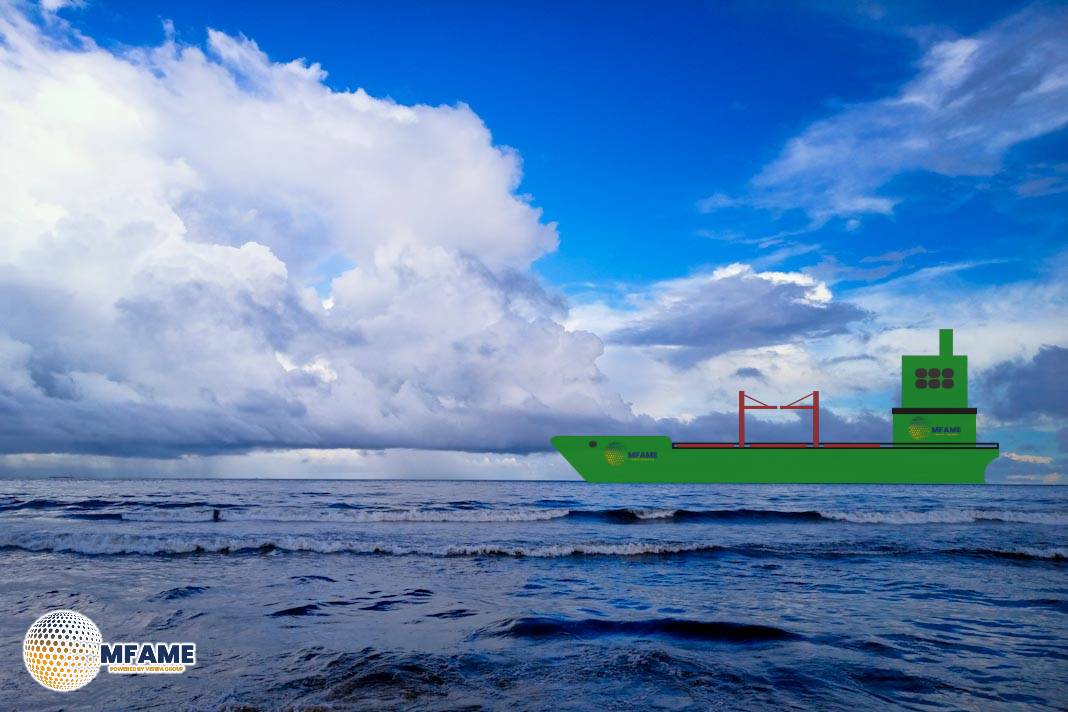- Cyclones Sean and Zelia disrupt Australian dry bulk flows, causing temporary port closures and supply chain delays.
- Capesize freight rates remain bearish, while smaller vessel segments show early signs of recovery.
- Port congestion in China eases, stabilizing after sharp declines in January and February.
Early 2025 saw a significant decline in Australian dry bulk shipments, primarily due to the impact of Cyclones Sean and Zelia. The severe weather conditions led to port closures, and infrastructure damage, and halted mining operations, particularly in Western Australia’s Pilbara region, a key hub for iron ore exports, reports Breakweave Advisors.
Australian Dry Bulk Flows Disrupted by Cyclones
Thw sharp drop in cargo movement is consistent with past weather-related disruptions, where export levels typically rebound once logistical operations resume.
With Port Hedland—the world’s largest iron ore terminal—now reopened, shipments are expected to recover in the coming months, supported by strong demand from China.
Iron Ore Prices React to Supply Disruptions
The market impact of these disruptions was reflected in iron ore prices, with China’s Dalian Commodity Exchange seeing its most-traded May contract hit its lowest level since mid-January. Similarly, the benchmark March contract on the Singapore Exchange dropped to its weakest level in weeks.
The cautious sentiment among traders stems from short-term supply constraints in Australia, but as port activity normalizes and demand from China remains strong, prices are expected to stabilize.
The dry bulk market has historically shown resilience, with long-term trends driven more by industrial demand and infrastructure investments rather than temporary supply shocks.
Freight Rate Trends: Capesize Under Pressure, Smaller Vessels Recover
Capesize freight rates for Brazil to North China shipments continue to decline, remaining below the $17 per tonne mark.
Meanwhile, Panamax rates from the Continent to the Far East saw a significant year-over-year drop of 27%, settling at $29 per tonne. However, smaller vessel segments showed signs of recovery.
Supramax rates on the Indo-ECI route climbed above $8 per tonne, marking a 9% monthly increase, while Handysize freight rates on the NOPAC Far East route rose to $28 per tonne, up 13% from the previous week.
These trends suggest that while larger vessels face ongoing bearish pressure, mid-sized and smaller vessels are beginning to see upward movement in rates.
Ballasters Data Shows Vessel Movement Trends
Tracking ballast movements offers insight into vessel availability and future freight rate shifts. The number of Capesize vessels in Southeast Africa remained at 150, continuing an upward trend that has persisted since late January. Panamax vessels in the region held steady at just over 180, significantly above the annual average.
Meanwhile, Supramax vessels in Southeast Asia continued their rise, reaching 110, while Handysize vessels in the NOPAC segment saw a slight decline, approaching the annual average of 27. These trends suggest that while larger vessel segments remain oversupplied, the mid-size segment continues to strengthen.
Tonne-Days Decline for Capesize, Stabilization for Panamax
The tonne-day growth rate for Capesize vessels has dropped to its lowest point in over a year, signaling a steep downward trend expected to persist through February. Panamax vessel growth has stabilized after previous declines, although market estimates suggest further weakening by month-end.
In contrast, Supramax vessels continue to experience strong growth, maintaining an upward trajectory since early February. Handysize vessels, while still outperforming Panamax in growth rate, saw a decline toward the end of Week 3.
These shifts highlight the ongoing segmentation in the dry bulk market, where larger vessels face continued challenges while mid-size ships gain momentum.
Chinese Port Congestion Trends Show Signs of Stabilization
Port congestion across key Chinese dry bulk terminals showed signs of stabilization after experiencing sharp declines in January and February.
The number of congested Capesize vessels fell below 100, marking a drop of 22 compared to year-end figures. Panamax congestion remained steady at around 150 vessels, down 30 from early February.
Supramax congestion declined slightly, with around 260 vessels reported, 10 fewer than the previous week. Handysize congestion also saw a modest drop, falling below 170 vessels.
These trends indicate that while port congestion remains a factor, the worst of the backlog from early 2025 may be easing.
Did you subscribe to our daily Newsletter?
It’s Free Click here to Subscribe!
Source: Breakweave Advisors
















